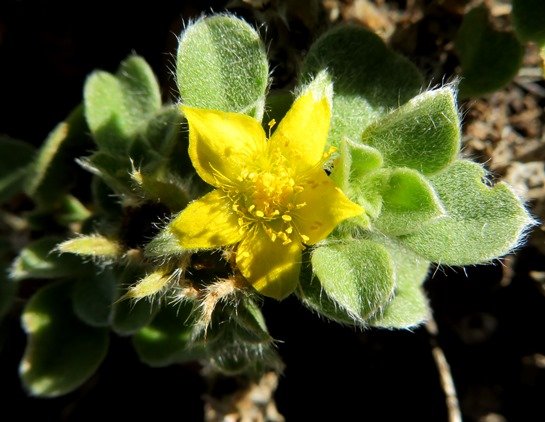Aizoon

Author: Ivan Lätti
Photographer: Thabo Maphisa
Aizoon is a genus of hairy, leaf succulent herbs and undershrubs in the Aizoaceae or mesemb family. The dwarf plants are evergreen.
The generic name, Aizoon, is derived from the Greek words aei meaning ever or always and zoon meaning an animal or a living entity, referring to the plants’ ability to stay alive under difficult circumstances.
The leaves are mostly alternate, sometimes crowded at stem-tips and with or without petioles; always without stipules. The leaves may be flat and fleshy with entire margins or cylindrical.
The flowers are bisexual, growing solitary or in groups from leaf axils. The short or bell-shaped perianth base like a calyx (there are no petals), is tubular and hairy outside, ending in four or five white, yellow or pink lobes, often thus coloured on the inside only.
The number of stamens growing from around the ovary on thread-like filaments vary much across the different species, sometimes occurring in groups alternating with the perianth lobes. The superior ovary has four or five locules embedded among the perianth lobes. It is sometimes disc-shaped.
The fruit is a corky or woody capsule dented in the centre and remaining on the plant for a long time. The expanding keels vary in length. Many seeds are borne in the four or five chambers. The seeds are small and kidney-shaped or pear-shaped on longish attachments or funicles.
There are about 25 Aizoon species near the Mediterranean, in Africa and Australia; 11 of which are found in southern Africa. In South Africa they mainly occur from Namaqualand to the Eastern Cape.
Some of the species are cultivated as garden subjects. Most of the local species are browsed by game and stock. The Afrikaans common name of skaapvygie (sheep mesemb) for several local species bears testimony to this.
The plant in picture is Aizoon glinoides (Leistner, (Ed.), 2000; Vlok and Schutte-Vlok, 2015; Manning, 2007).

